It actually worked!
I could have sworn I posted when this date seed was planted, but I can't seem to find it to link to, so maybe I imagined it. Anyway, bottom line, some archaeologists found a 2,000 year old date palm seed at Masada, in Israel, planted it, and unbelievably, a couple years later, it's growing and doing fine:
Researchers Resurrect Extinct Judean Date Palm Tree from 2,000 Year Old Seed (AAAS)
The Judean date palm (a variety of Phoenix dactylifera), of which this "Methuselah" is perhaps the last remaining vestige, was once a staple crop of ancient Palestine, at one point existing in vast, towering forests along the Jordan River valley. Date palm culture declined after the arrival of Roman occupation (the Romans had a lot to do with this by preventing the Jews from propagating it), and the Judean date palm appears to have been wiped out entirely by about the sixth century A.D. Modern date palms, still a major industry in Israel, are from imported stock.
Delving into the highly reliable realm of information gathered from anonymous somebodies on internet forums that blogs so often deal in, I also found this post on PalmTalk, which references a genetic study suggesting that the plant bears little resemblance to modern palms, with only a 13% similarity to an ancient Egyptian cultivar (search for "13% similarity" or go maybe a third of the way down the page to a post by 'rubyz'). Another incredibly reliable source, Wikipedia, states that the Egyptian cultivar is Hayany, and that it is a 13% dissimilarity. Who knows. Probably it's at least kind of related to something. Still, whatever its DNA says, it's still pretty cool.


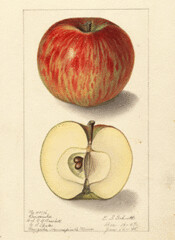
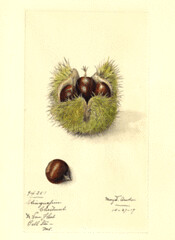
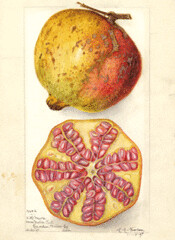
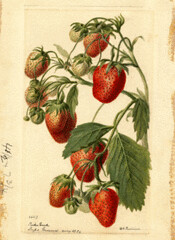
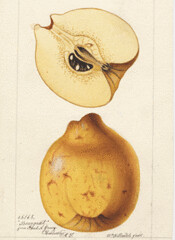



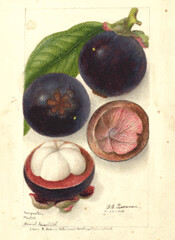
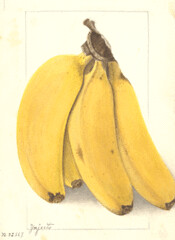

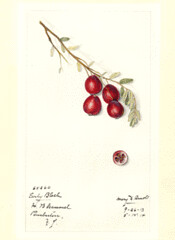
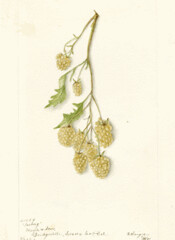
7 Comments:
Modern science really doesn't have any advanced way to tell whether the palm is male or female other than waiting until it flowers? God, that seems unbelievable. Isn't there some sort of sign that can be ferreted out from a DNA sample?
Yeah, I have to say I was a little surprised by that myself. Considering that dates are a pretty major crop and their sex is a pretty big deal in breeding them, you'd think they'd have worked something out to speed things up.
And it turns out there is a method to tell the boys from the girls at a genetic level. It seems date palms actually have sex chromosomes, probably an XX/XY scheme. I found this paper outline a method using in situ rDNA hybridization to determine male from female. Seems like a big pain in the ass for routine use, but this is just one plant, so it shouldn't be too bad. It's possible simpler methods have developed since this paper came out (2004), but if they have I didn't see them.
It's possible that because there are significant genetic differences between this and today's date palms, the tools developed on the latter don't necessarily work on Methuselah.
I also found another reference to sex-identification in date palms via isozymes. Isozymes are pretty darn easy, all things considered--I'd much rather do that than muck around with in situ rDNA hybridization and flow cytometry.
Unfortunately, it's in the Japanese Journal of Tropical Agriculture, which strangely has turned up missing from my personal library. So I have no idea if they propose a reasonable method of identification, or if, like some papers with such titles, the conclusion was "Uh, well...we tried. See, we tried a lot of stuff. Please let us publish a paper".
If any one happens to have access and wants to look it up, though, the reference is:
Suganuma, H, and Iwasaki, F. 1983. Sex identification of dioecious plants by the isozyme method. Date (Phoenix dactylifera L.). Jap J Trop Agr, 27:75–78.
The Jurassic Park-type nuts who want to resurrect dinosaurs from fossilized DNA scare me but I have to say I think it's pretty cool that a useful crop plant might possibly be un-extincted.
Yeah, but when the date palm starts eating people and they tell us, oh, it's okay, we'll just send it to some sort of remote island, we'll know better.
Lady Evil Fruit and I were talking about it just now, and we were thinking that even if it turns out to be male, there ought to be a way to coax female flowers out of it with enough chemical cajoling. Sex in plants is pretty maleable. (I had a post I was working on on the inheritance of sex in American persimmons that would make your head spin, but I never finished it. In part because it was a little too head-spinny).
Speaking of Lady Evil Fruit, when I mentioned this story, her response was "Oh...wasn't the previous record holder a 1,300 year-old lotus seed?" Which of course it was. It's things like this that are why I married that woman (and a few other things as well.)
Okay, I know why *I'm* up at 3am but what's the excuse for you two? Was talking about palm DNA just too exciting and a prelude to something else? ;-)
That paper might be in the library, but it doesn't look like there is any online access to me.
My mom sent me a newspaper cutout of this (weird that they covered a plant thing in a newspaper that isn't biofuels or flooding, right?). It is pretty amazing that a seed can last that long. It really makes you wonder just how long they really would last. 3000 years? 10K? Beyond?
Jurrasic Park indeed. They'll need some really old plants for the dinosaurs to eat when they resurrect them.
Make some sense of that Persimmon post and make it live. I'm curious.
Post a Comment
<< Home